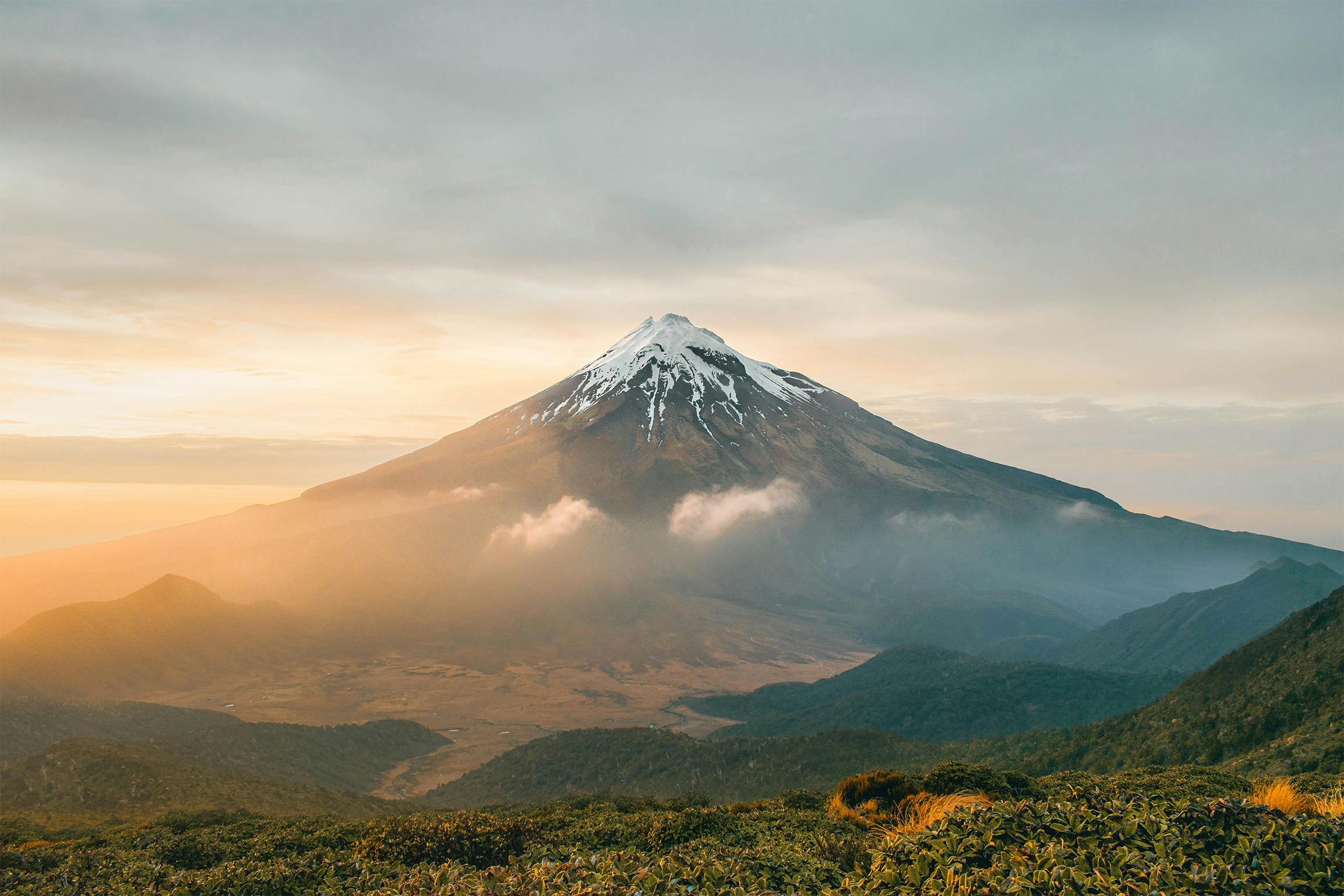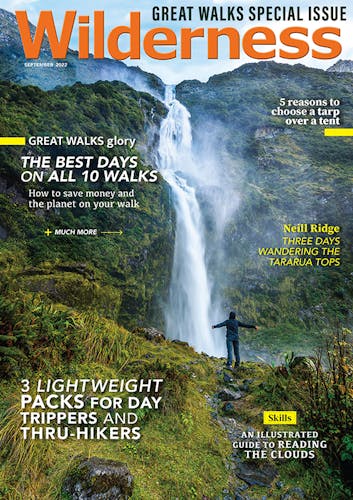Some people have a special connection to a place, and nowhere is that more apparent than Taranaki Maunga. Some locals have climbed the famous peak hundreds of times.
At 81 years of age, Derek Andrews has climbed Taranaki Maunga 870 times.
He’s collected 8077 pieces of glass during his summits and 30kg of rubbish off the mountain this year alone.
It’s what makes him one of many stalwarts, a loyal, reliable and hard-working supporter of the maunga doing his bit to protect it.
But when asked what it is that draws him to Taranaki Maunga in particular, Andrews says it’s a matter of convenience.
“I can drive there in half an hour,” he says.
Perhaps if he’d lived in Hamilton, his life would have been very different.
He did his first summit on February 25, 1956, and joined the New Plymouth Tramping Club in 1976.
Andrews writes down every interaction he has with the mountain – the date, the time he did it and what he collected along the way. Any rubbish is weighed when he gets home.
“It’s just amazing how much would still be on the mountain if I hadn’t collected it.”
It’s not just rubbish and glass Andrews collects. During his years he’s found the crampon of a climber who died on the mountain, a New Zealand flag, an Australian flag, a Canadian flag, an American coin suspected to be from World War II times, and a 1940s penny.
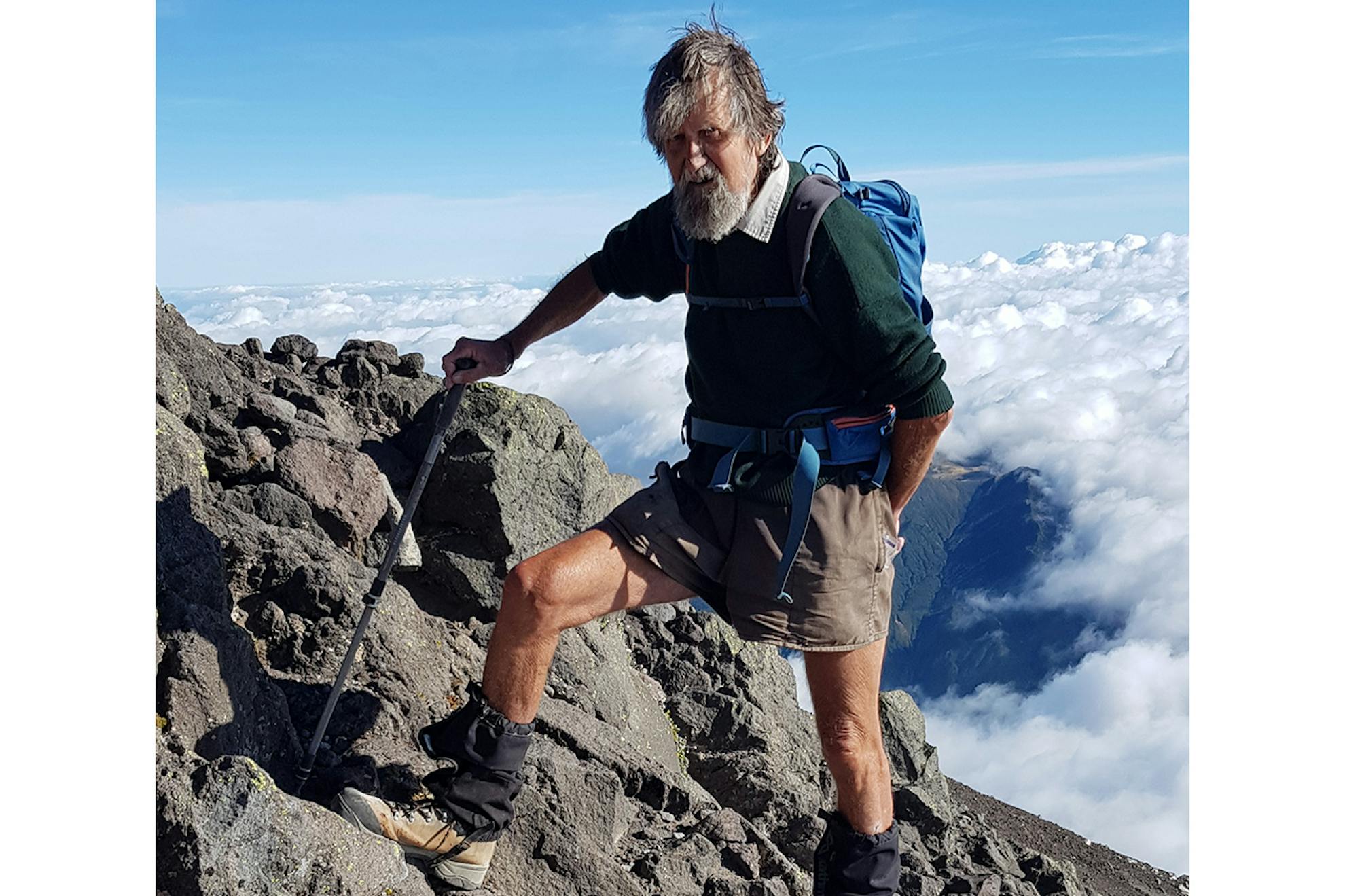
When Andrews’ wife died on Anzac weekend in 2000, he had climbed the mountain 70 times.
The words she left with him spurred him to climb it even more.
“She wrote 24 pages of memories and ramblings, and in one said she wondered how many times I’ve climbed the mountain,” Andrews recalls. “If she was still around, there’s no way I would have climbed it so many times.”
In 2018 he went to the top 18 days in a row.
But Andrews believes he is done with the summit now due to his age. His last climb was at 81 years and 252 days old and he completed it in 4hr 39min – not bad when DOC says to allow 8–10 hours.
But just because he’s done with the summit doesn’t mean he’s done with the mountain.
“There’s plenty of climbing in the Pouakai and Kaitake ranges,” he says.
Lindsay Maindonald, one of Andrews’ climbing companions, talks about the mountain like an old friend. His appreciation for Taranaki Maunga and his love of getting others interested in it is what makes him a stalwart.
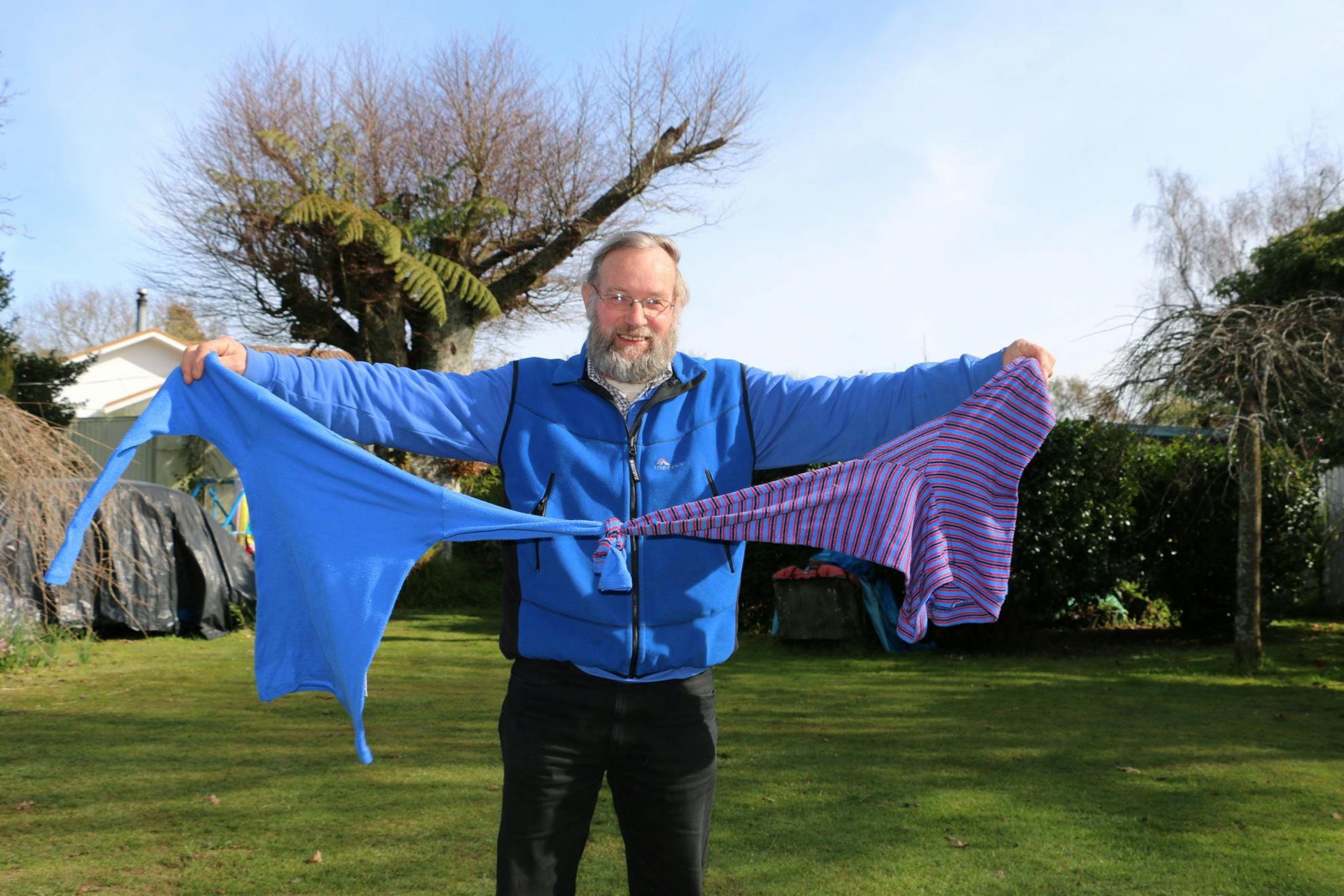
Maindonald, who has summited around 300 times, is a landscape artist known for painting the maunga in particular. It soon progressed to him climbing his subject matter, and now you can find him up the mountain most weeks.
“I just love the mountain and I am climbing on all the ridges that I was familiar with looking at and painting,” the 68-year-old says. “It’s my happy place. I can be feeling quite down about things and I’ll put a pack on my back and within half an hour I’m good.”
Every now and then he contemplates moving out of the region but thinks he’d miss the mountain too much.
He loves getting above the bush line and seeing the views out to the coast.
Maindonald gets a lot of enjoyment out of sharing his love of the mountain and introducing people to it. He regularly takes others up and has made many friendships doing so.
“It’s a fraternity,” he says.
Maindonald says he is very familiar with the mountain but not so familiar that he has become complacent. “That’s when accidents happen.”
In 2020 he made headlines when he and friend Dave Sattler rescued a woman and her partner who got into trouble in icy conditions, using a ‘rope’ made of long johns and a thermal top.
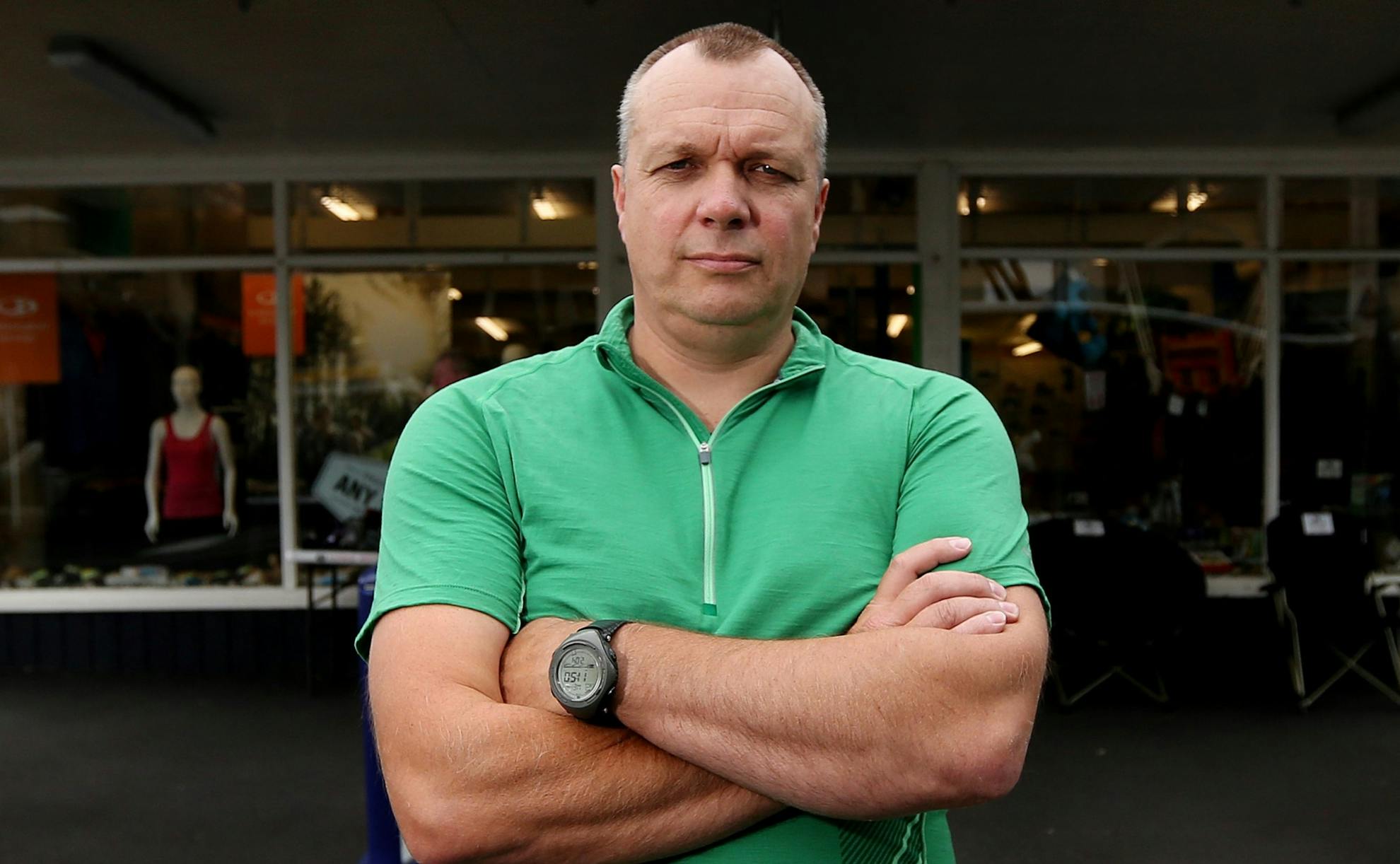
But there are people more familiar with the mountain than him, he says. There are hunters’ tracks he has no idea about. That’s the thing about Taranaki Maunga, he says, it’s never the same twice.
“You could look out probably 24 hours a day and it’s always different. The colour is different, it’s dark, you think it’s gonna rain – it’s Taranaki’s weather barometer, really.”
Rob Needs is adamant he is not a stalwart of the maunga. He lists a dozen other names who would be more suited to the title.
However, his long career as a mountain guide and shuttle driver would suggest he is well worthy of it. Needs owned New Plymouth Kiwi Outdoor Company for 17 years before closing the doors in 2015.
He is not only passionate about getting people to the top safely, but also about respecting cultural aspects when on the mountain.
In Māori culture, the mountain is considered a tupuna (an ancestor). Climbers should not stand on the highest point, known as the summit stone, as this is considered the same as standing on the head of an ancestor. No cooking, toileting or camping should take place in the summit area either.
“The disrespect shown to our tupuna is immense – some on purpose, some on misunderstanding,” Needs says.
Unlike Andrews and Maindonald, Needs doesn’t count how many times he has been to the summit but estimates it is fewer than 100.
Police officer Vaughan Smith stopped counting his summit climbs in 1982. He loves the mountain but climbing to the top no longer holds the allure it once did. It’s a ‘been there done that’ type of thing.
His years of climbing the mountain have led to him being heavily involved in police search and rescue operations.
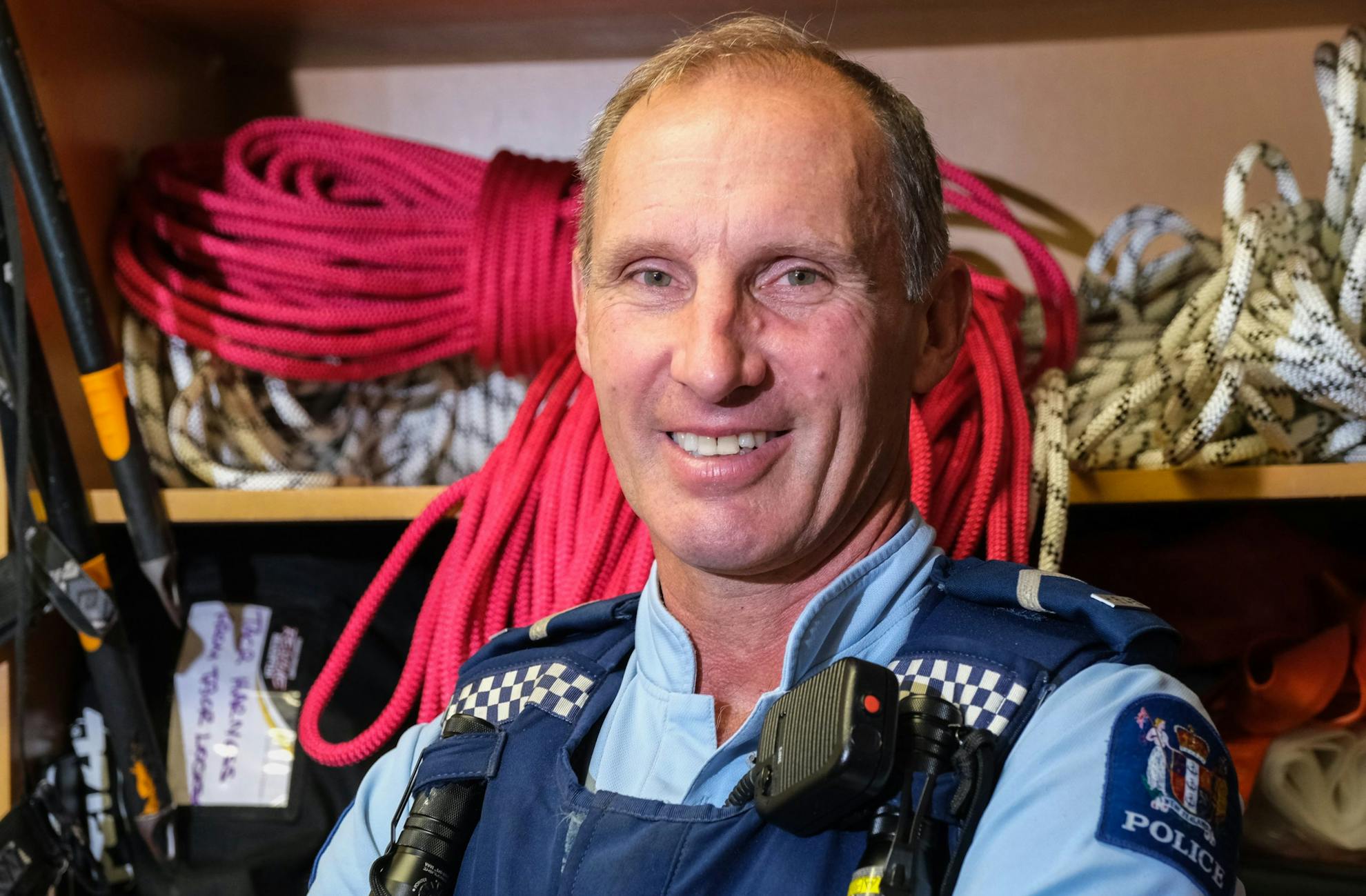
His knowledge of the landscape, the different areas and conditions as well as his skill and ability as a mountaineer are invaluable in rescues, and he’s done a lot over the years. He was involved in the recovery of Christchurch engineers Peter Kirkwood and Richard Phillips, who died near Fanthams Peak in May last year as they descended in icy conditions following a night summit.
He doesn’t get on the mountain as much as he would like to these days, but he particularly enjoys the winter months and tramping on the ice.
“As I get older, I get more of an interest in what’s around me,” he says. “In winter, the sculptures that are created in the ice are absolutely amazing.”
Smith says he’s had a lifetime involvement with the mountain but first began climbing it at the age of 16. It was the sense of adventure that drew him in.
“You see these programmes on TV about climbing mountains and start off that way, and when you’ve got a few mates that are keen to go climb the mountain and you’re looking for a bit of adventure that’s what you’re gonna do.”
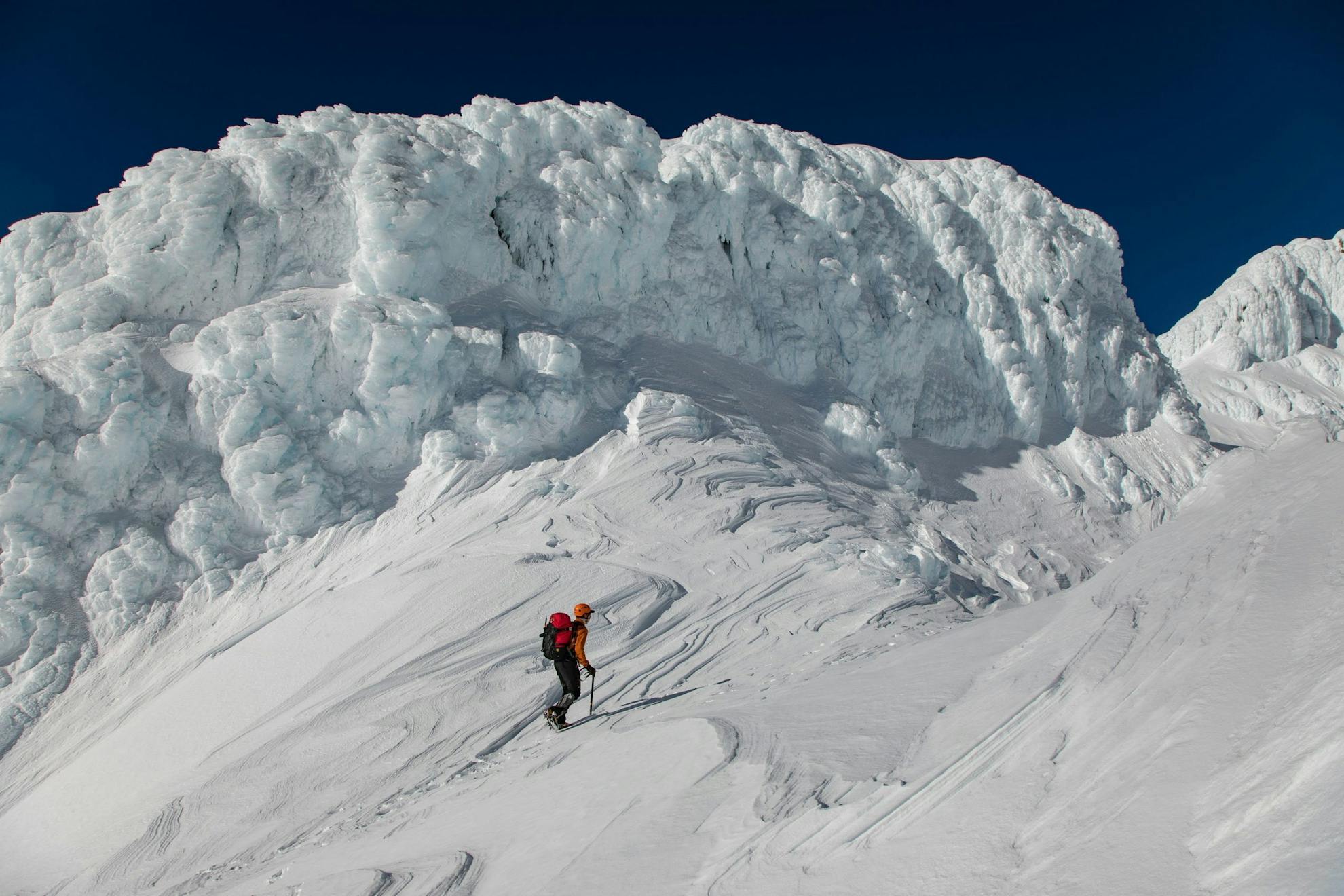
Smith and his mates would climb in some appallingly stormy conditions when he was “young and dumb”, as he puts it. That was where the adventure could be found, he says.
“The elements make you feel alive.”
These days he gets more pleasure out of just being on the mountain and appreciating the flora and fauna. But through his time up there and his involvement in search and rescue, he’s seen plenty of people who don’t give the mountain the respect it deserves.
“They’ve got no idea. People don’t listen to those in the know with regard to the changeability of it,” he says. “The problem with our mountain is he’s a really accessible beast to get on top of, fabulous to look at, super accessible, and 99 per cent of the time people get away with not being well prepared.”





